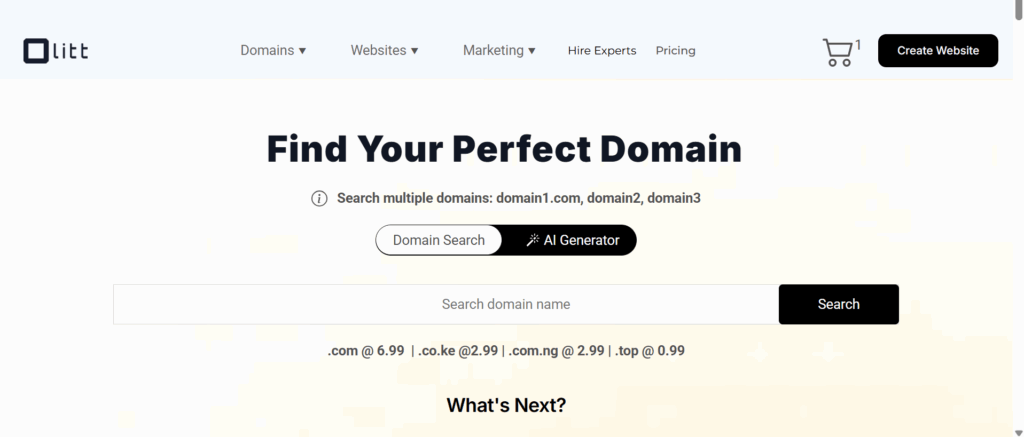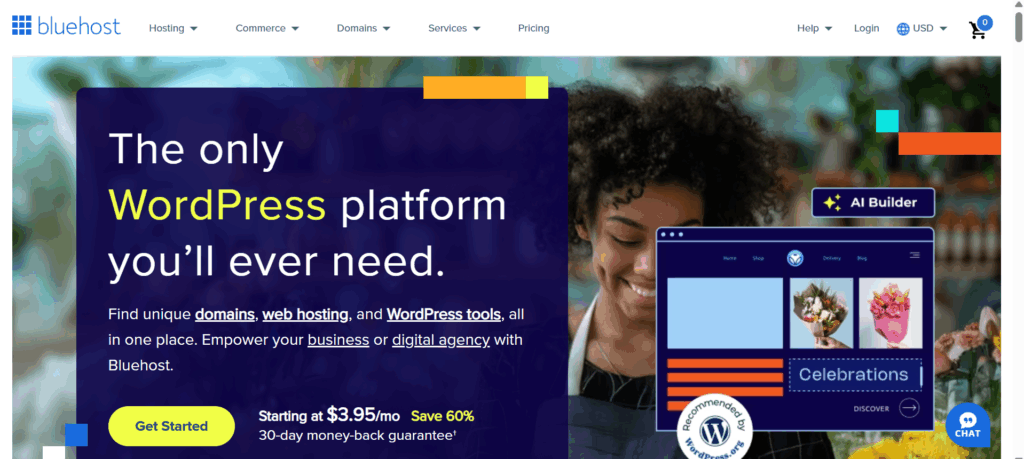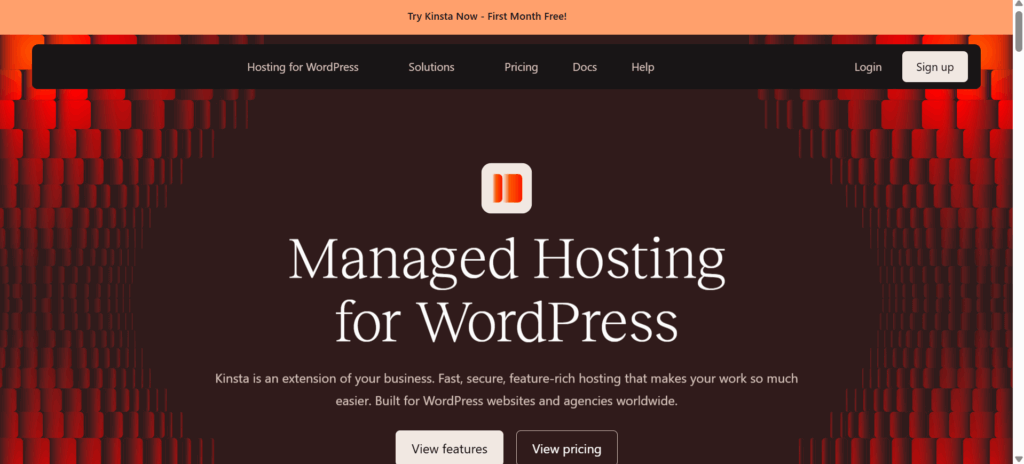In today’s digital world, getting your stories out there is easier than ever, and having your own website is one of the best ways to do it.
It’s your personal corner of the internet where your stories can live, grow, and reach readers around the globe.
Whether you’re just starting out or looking to take your writing to the next level, this step-by-step guide will help you create a website that truly reflects your voice from the first idea all the way to launch (and what comes after).
Why Start a Website for Your Stories?
In an age where attention is currency and storytelling is everywhere, from Instagram captions to Netflix series having your own website gives you something invaluable: control, credibility, and creative freedom.
Whether you’re an emerging writer, a hobbyist, or a published author, here’s why starting a website for your stories isn’t just a good idea, it’s essential.
1. You Own Your Platform
Social media is powerful, but it’s not yours. Algorithms change, platforms die, accounts get banned, and your followers can vanish overnight.
A website, on the other hand, is your real estate on the internet. You decide what gets published, how it looks, and who sees it.
It’s the one place you can showcase your writing without restrictions.
2. Build Your Brand as a Writer
Readers don’t just fall in love with stories they connect with the storyteller. A personal website gives you a chance to shape your identity as an author.
Your tone, visuals, design, and message all contribute to how people perceive your brand.
Whether you write romance, thrillers, flash fiction, or memoirs, your website becomes the digital face of your writing career.
3. Showcase and Archive Your Work
Have dozens of stories scattered across notebooks, Word files, or social media posts? A website lets you organize them in one easy-to-use hub.
Think of it as your digital library, a clean, searchable archive where readers can binge your stories or explore your backlist.
No more sending PDFs or digging through old email chains.
4. Reach and Grow an Audience
Your website acts as a magnet for readers , especially if you optimize your content for search engines (SEO). People around the world can discover your stories through Google, read your work, and subscribe for more.
With the right tools, you can build an email list, create a fanbase, and turn casual visitors into loyal followers.
5. Experiment Without Limits
Want to serialize a novel? Post a poem a day? Add audio versions of your flash fiction? On your website, you can do all of that.
Unlike traditional publishing, which comes with gatekeepers and rules, your site gives you space to experiment with form, voice, and format — on your terms.
6. Professionalism and Credibility
When someone Googles your name and finds a clean, well-crafted website with your stories, bio, and contact info, it instantly boosts your credibility.
Whether you’re applying for writing fellowships, pitching to editors, or submitting to journals, a website makes you look serious about your craft.
7. Create a Central Hub for Everything
Think of your website as your command center. You can link to:
▪️Your published works or books on Amazon
▪️Your social media profiles
▪️Press features or interviews
▪️A blog or newsletter
▪️Patreon or donation platforms
Everything you do as a writer can point back to this one central space.
8. Opportunities to Monetize
Once you’ve built an audience, your website can become a source of income. You could:
🔹️Sell ebooks or audiobooks directly
🔹️Offer writing coaching or editing services
🔹️Launch a membership community for exclusive stories
🔹️Accept reader donations or tips
🔹️Monetize through affiliate links or ads
It’s not just a platform for passion, it can also be a stepping stone to profit.
9. Connect with Readers — and Other Writers
A comment section, contact form, or email newsletter lets you interact directly with your readers.
These relationships are gold, they can lead to lifelong fans, feedback on your work, or even collaborations with fellow writers, illustrators, or publishers.
10. Leave a Legacy
A website can outlive trends, tech platforms, and even your current projects. It’s a growing, evolving space that documents your journey as a writer.
Years from now, it can show how your voice developed, how your stories matured, and how your words touched others.
A Step-by-Step Guide for Writers
Step 1: Get Clear on Your Purpose
Before you touch a domain name or choose a platform, take a step back and ask yourself: Why am I building this website?
This is where your creative vision meets strategy. Are you:
🔹️Building a portfolio to showcase your writing skills?
🔹️Sharing serialized stories or blogging about your writing journey?
🔹️Hoping to sell ebooks or grow a reader community?
Then ask: Who am I writing for?
🔹️Are your stories aimed at teenagers? Poetry lovers? Dark fantasy fans? Knowing your audience shapes everything — from your tone to your layout.
Finally, think about the kind of content you’ll share:
🔹️Short stories? Poetry? Audio versions of your work? Flash fiction posted every Friday?
Your answers will be your compass. They’ll help you choose the right tools and design a site that truly feels like you.
Step 2: Choose a Domain Name That Reflects You
Your domain name is your digital identity — like your pen name in URL form. It should be simple, memorable, and relevant to your writing voice or genre.
Here are a few ideas:
▫️www.StoriesByAmina.com – great for a personal storytelling brand
▫️www.TalesOfTwilight.com – perfect for genre fiction or fantasy
▫️www.YourNameWrites.com – classic, clean, and professional
💡 Tips:
🔸️Keep it short (ideally under 20 characters)
🔸️Avoid numbers and hyphens
🔸️Check if the name is available on social media too
You can buy your domain from registrars like Namecheap, Google Domains, or GoDaddy for around $10–$20 per year.
Step 3: Pick the Right Website Platform
Not all websites are created equal — and not every writer has the same technical comfort level. Here’s a breakdown of the most popular platforms for storytellers:
1. WordPress.org (Self-Hosted)
Best for: Full control, long-term growth
Pros: Customizable themes, powerful plugins, great for SEO
Cons: Slight learning curve, requires separate hosting
🟡 You’ll need a hosting provider like Olitt, Bluehost, SiteGround, or Kinsta.
2. Wix
Best for: Quick, drag-and-drop website setup
Pros: Beautiful templates, intuitive interface
Cons: Limited flexibility if your site grows
3. Squarespace
Best for: Visually-driven authors or photographers
Pros: Sleek design, all-in-one features
Cons: Fewer integrations, slightly higher cost
4. Substack or Revue
Best for: Writers who publish via newsletters
Pros: Email-first format, built-in monetization
Cons: Less customizable design and branding
Our recommendation: If you want to grow your brand and possibly monetize later, go with WordPress.org.
It’s the most flexible and professional long-term choice.
Step 4: Choose a Hosting Provider (If Using WordPress)
Your host is like the plot behind your novel — it holds everything together.
A good host ensures your website is always live, loads quickly, and can handle traffic spikes.
🔍 What to look for:
✔99.9% uptime
✔Fast page speed (Google rewards this!)
✔Easy scalability
✔Great customer support
🔥 Top Hosting Picks for Writers:
✔Olitt – Great local option, affordable, includes free SSL

✔Bluehost – Budget-friendly and beginner-friendl

✔SiteGround – Known for speed and stellar support

✔Kinsta – Premium hosting for heavy traffic and advanced users

Step 5: Design Your Website Like a Storybook
This is the fun part , making your site feel like you. Aim for a design that reflects your tone and genre, but most importantly, make it easy to read and use.
🗂️ Must-Have Pages:
⚫Home – Introduce yourself and highlight your latest or best work
⚫Stories or Blog – Where your content lives
⚫About – Let readers know who you are and why you write
⚫Contact – For fans, editors, or collaborations
⚫Subscribe – To build an email list of loyal readers
🖋️ Design Tips:
◾Use clean, readable fonts like Georgia, Merriweather, or Open Sans
◾Avoid clutter or over-the-top animations
◾Add a subtle color palette and a personal logo or signature
Your goal: Make readers feel like they’ve just stepped into your creative world.
Step 6: Start Publishing — Consistently
Now it’s time to breathe life into your site with content. Before you hit “publish,” decide on your release rhythm:
▫️A weekly short story?
▫️A monthly chapter of your new novel?
▫️Daily micro-poetry?
Whatever you choose, stick to a consistent schedule. Readers love predictability — it builds trust.
🧠 Formatting Tips:
🔹️Use clear titles and subheadings
🔹️Add a 1–2 line teaser or hook at the top
🔹️Include a call-to-action like: “Subscribe to get the next part!”
Make your stories easy to read and addictive to follow.
Step 7: Build Your Audience (One Reader at a Time)
You’ve built the site, now bring people to it. Here’s how:
✅Social Media:
Share quotes, character insights, or behind-the-scenes writing snippets on platforms like Instagram, TikTok, and Twitter (X).
✅Email List:
Start from day one. Offer a free story in exchange for email sign-ups using tools like MailerLite, ConvertKit, or Mailchimp.
✅SEO (Search Engine Optimization):
Use Google-friendly keywords in your titles and tags:
“Best African romance fiction”
“Suspense short story blog”
Write a few blog-style posts to attract search traffic.
🤝 Collaborate:
Join online writing communities like:
Scribophile
Reddit’s r/writing
Facebook groups for fiction writers
Comment, connect, and support others — it often comes back around.
Step 8: Monetize (If You Want To)
Once you have an audience, you can turn your writing into income, without sacrificing your integrity.
💸 Monetization Ideas:
☑Sell ebooks or audiobooks directly
☑Launch a Patreon for bonus content or early access
☑Offer writing services like critiques or coaching
☑Start a newsletter course or writing challenge
☑Accept donations with Ko-fi or BuyMeACoffee
🎯 Tip: Keep your reader’s experience front and center. Be generous with free content before pitching products or services.
Conclusion
Creating a website for your stories is one of the most empowering things you can do as a writer.
It’s your own creative home, a place where your words can live, grow, and reach people who truly connect with them. Yes, it takes a bit of time and effort to set up, but the payoff is worth it.
You’ll have a space that’s entirely yours, where you can share your stories on your terms and build a deeper connection with your readers.
Follow the steps we’ve outlined, and you’ll be well on your way to growing your presence and touching more lives through your storytelling.
